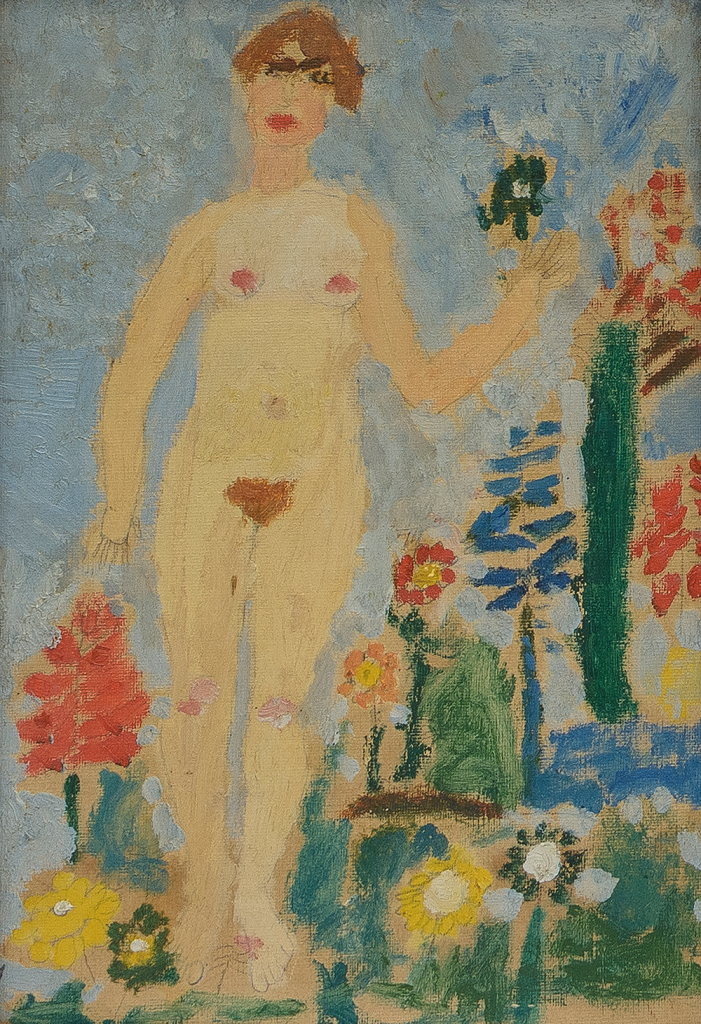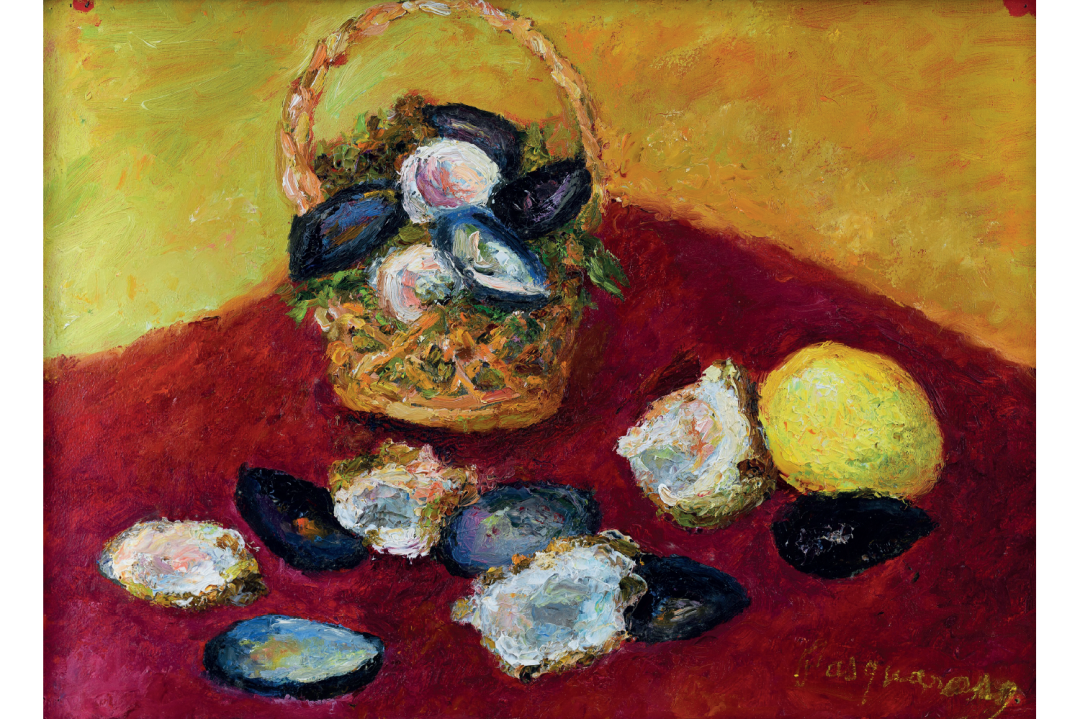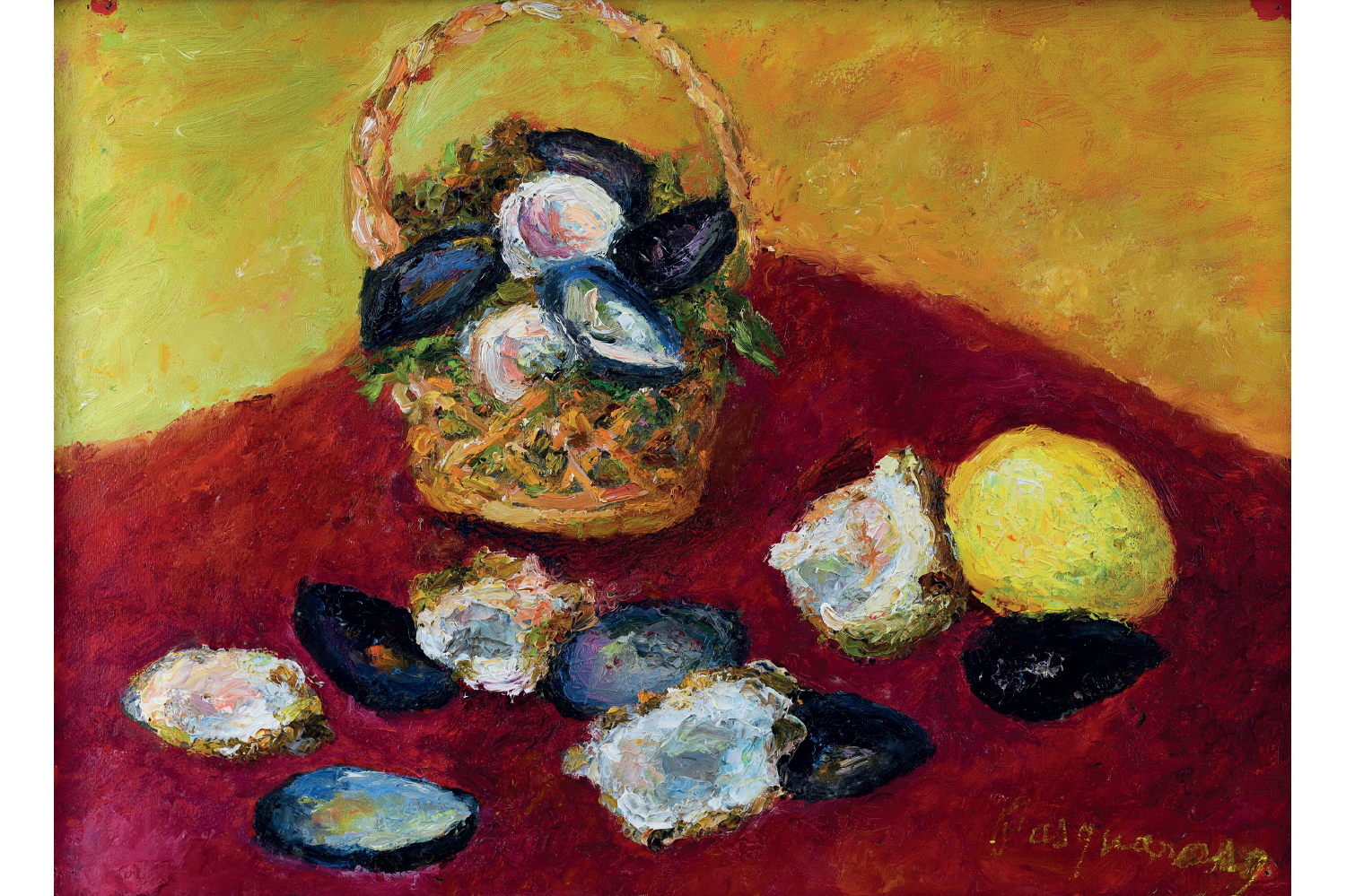In February 1929, an exhibition by a young unknown female painter opened at the Arlington Gallery on Bond Street. This was not surprising in itself, given that the gallery specialised in lesser-known artists. More surprising was the fact that this artist was a woman – and Italian.
As the critic Emilio Cecchi noted in the catalogue: ‘As regards the best Italian art of today the English public knows very little.’ What piqued people’s interest in this particular Italian artist was her fascinating backstory. Born in 1896 in Anticoli Corrado, a small hill town northeast of Rome known as a nursery for artists’ models, Pasquarosa Marcelli had never painted and was virtually illiterate when she moved to the capital in 1912, aged 16, to work as a model. There she fell in love and shacked up with the artist Nino Bertoletti and, inspired by a model friend who had taught herself sculpture, tried her hand at painting. She took to it like a duck to water. By 1915, her work was hanging in the third annual exhibition of the Roman secessionists, a group of independent-minded artists who eschewed both passatismo and futurismo, preferring to plough their own furrows. The influential critic Cipriano Efisio Oppo greeted her as un fenomeno.
Without any background in art, Pasquarosa had an eye – and took every chance to educate it
The human-interest angle made good copy. The Westminster Gazette headed its coverage ‘Peasant Artist’, and her model looks helped; she was ‘herself a beautiful creature’, noted the reviewer for the American Magazine of Art. But although promoted to a London audience as ‘the best-known woman painter in Italy’, Pasquarosa, as she always signed herself, was not yet that well established in her native land. The London exhibition, her first solo show, put her on the map; later that year she was given a room to herself at the artists’ union exhibition in Rome and the following year she debuted at the Venice Biennale.
Without any background in art, Pasquarosa had an eye and – encouraged by the supportive Bertoletti, whom she married in 1915 – took every opportunity to educate it. The secessionist exhibitions provided an opportunity to follow avant-garde developments outside Italy – in the 1913 edition, in which Bertoletti showed, she will have seen paintings by Bonnard, Vuillard and Vallotton – and the couple’s first home at the Villa Strohl Fern, a more salubrious version of La Ruche in Paris, was a hive of cosmopolitan artists. Among the thirty paintings in the Estorick’s new exhibition – mostly still lifes, as at Pasquarosa’s Arlington show – there are echoes of Matisse in the patterned textile backdrop to ‘Pink Cineraria’ (1918) and of Bonnard in the pullulating colour of the late ‘Vase of Flowers against a Yellow Background’ (c.1962).

To an English eye, though, the artist Pasquarosa most resembles is her almost exact contemporary Winifred Nicholson, a fellow lover of cyclamens and cinerarias married to a more mainstream artist. She belongs with Nicholson to that interwar flowering of consciously ‘naïve’ painters, often with patchy art educations such as Christopher Wood and Cedric Morris, who rejected academic tradition without replacing its strictures with modernist theory. She was a free spirit.
While her husband identified with the backward-looking novecento movement, Pasquarosa was effortlessly avant-garde. The striking thing about the show’s earliest work, the doll-like ‘Small Nude’ (c.1913), is the absence of any defining outline: as a novice she launched herself into paint without stabilisers. From the start there is a fearlessness about her work that stems from pure enjoyment – the fearlessness of an artist unsaddled with the weight of history happily absorbed in doing her own thing. Pasquarosa’s paintings, observed her friend Carlo Levi, have the ‘simple authenticity and expression of truths that spring straight from the heart and therefore seem to find their pictorial form naturally’.
There is something wonderfully honest about a work whose only ambition is to immortalise an object
Like Nicholson, she was a colourist first and foremost. In her early work she pushes paint around to produce a surface compared by Cecchi to ‘the effect of soft and curly wool’; in later work, like ‘Zinnias’ (1933), her touch is more descriptive but her approach remains basically the same: select a subject, sit down in front of it and attack it at close quarters, head-on. The approach doesn’t work so well with landscape judging by the one example in the show, but it does with still life. There is something wonderfully honest about a work whose only ambition is to immortalise an object.
A vitrine contains a photograph of Pasquarosa modelling for Bertoletti in the pose of the reclining nude from Titian’s ‘The Bacchanal of the Andrians’; in his resulting painting, shown alongside, Bertoletti turns the teenager from Anticoli Corrado into a Roman nymph. But Pasquarosa doesn’t turn her humble subjects into anything. Her still lifes are not elevated above their station into natures mortes loaded with meaning. They are what they are – cyclamens, cinerarias, calendulas, zinnias – defined by their distinctive habits and alive with colour. Simultaneously modern and timeless, they’re as fresh today as when they first charmed London audiences a century ago.







Comments